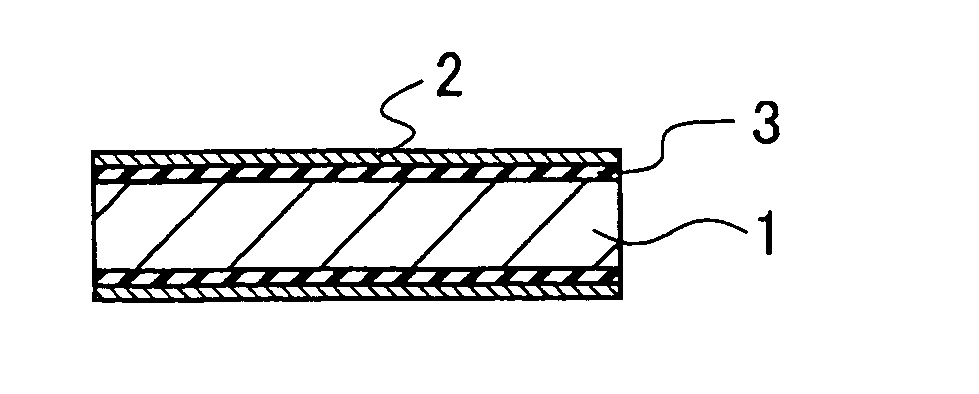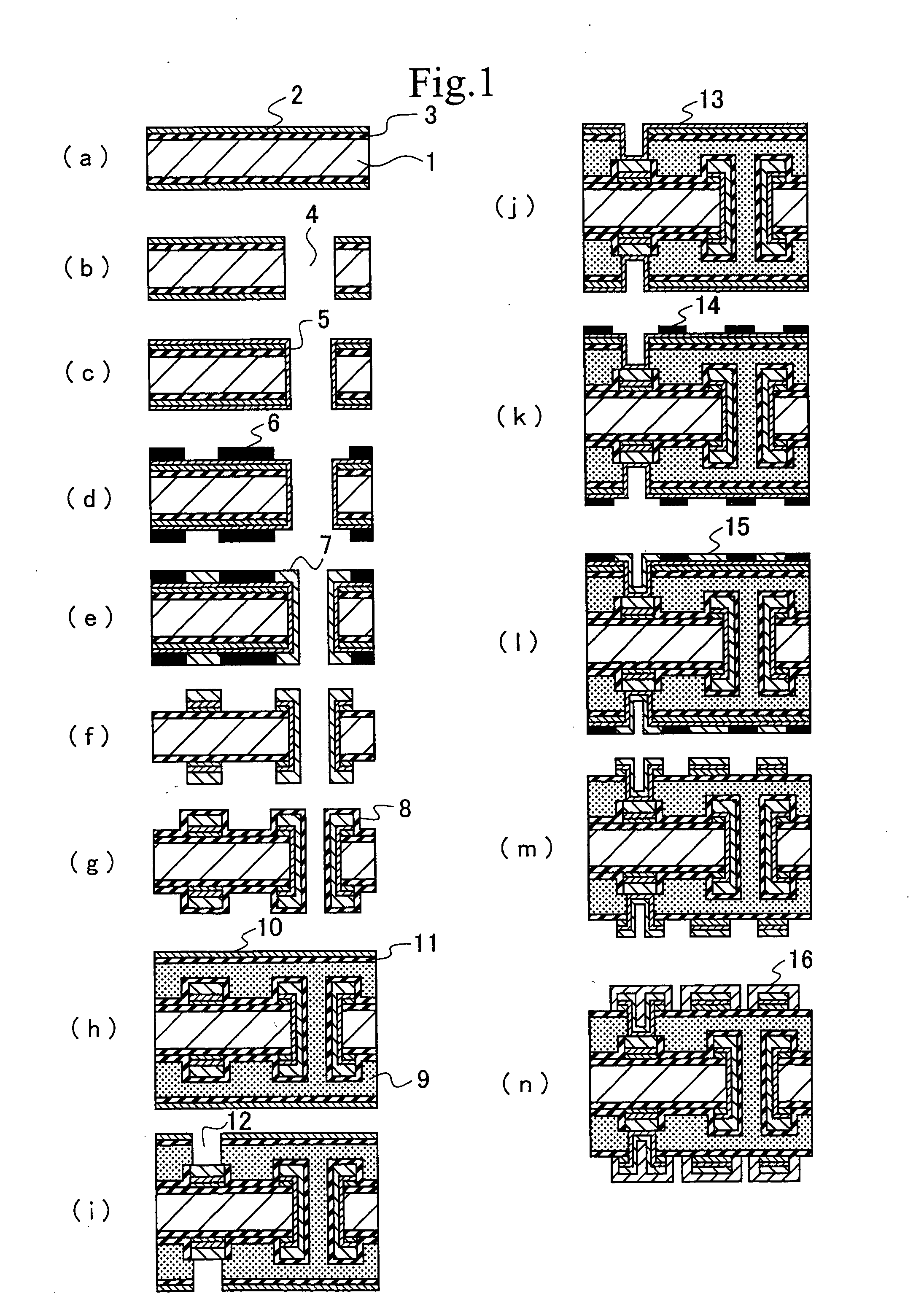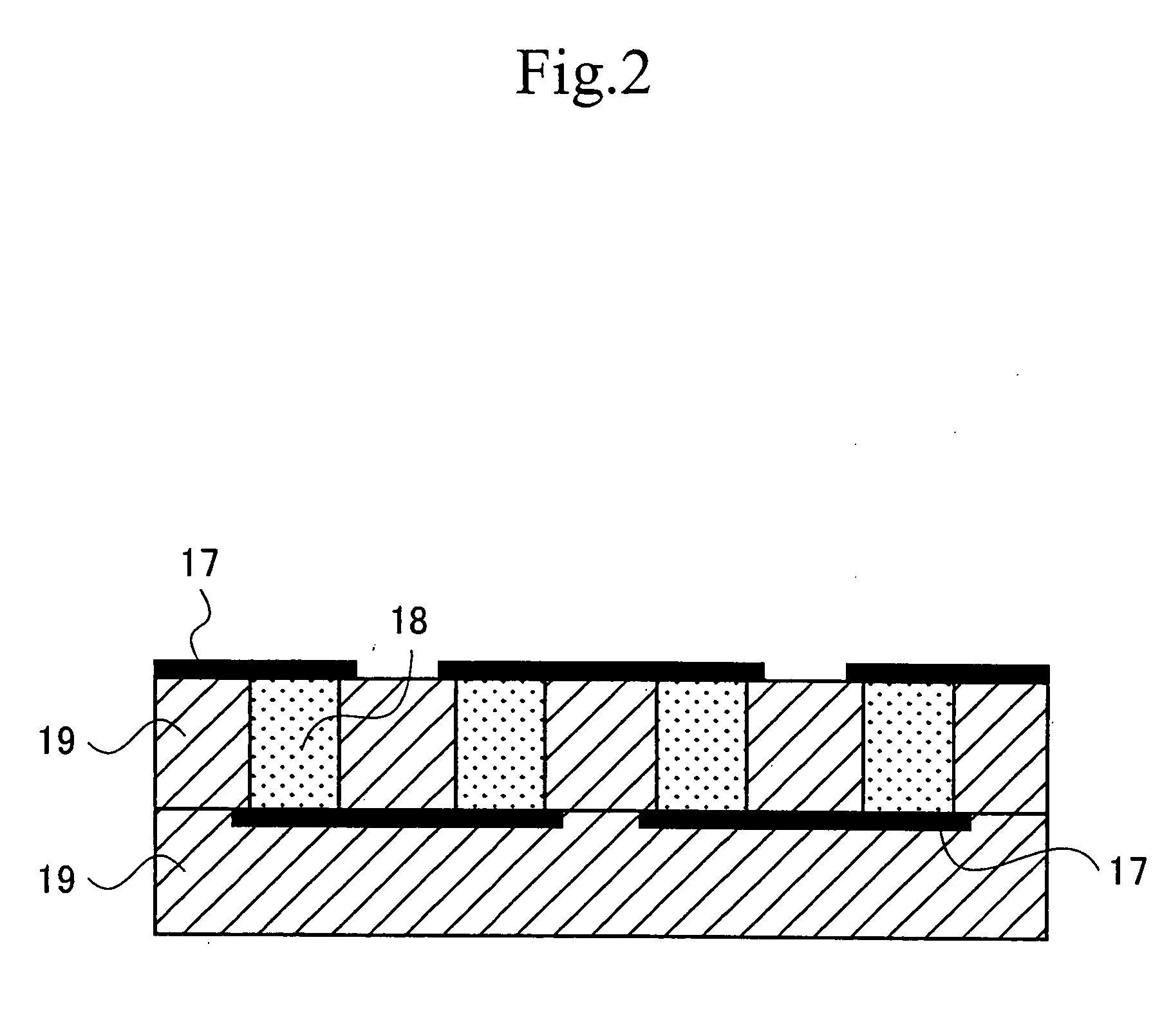Adhesion assisting agent-bearing metal foil, printed wiring board, and production method of printed wiring board
a technology of adhesive agent and wire, which is applied in the direction of insulating substrate metal adhesion improvement, conductive pattern formation, and dielectric characteristics, etc., can solve the problems of undesirable deterioration of electric properties, difficult to form a built-up layer on a core substrate or a solder resist on a substrate, and achieve excellent high frequency properties. , the effect of improving the adhesion strength of the resin and the bonding strength
- Summary
- Abstract
- Description
- Claims
- Application Information
AI Technical Summary
Benefits of technology
Problems solved by technology
Method used
Image
Examples
example 1
[0185] The following metal foil A was produced.
[0186] (Metal Foil A)
[0187] Chromium plating was continuously carried out on the bright face of an electrolytic copper foil (a carrier copper foil) with a width of 510 mm and a thickness of 35 μm in the following conditions to form a chromium plating layer (a separation layer) with a thickness of 1.0 mg / dm2. The surface roughness (ten-point mean surface roughness) Rz after the chromium plating formation was 0.5 μm. The surface roughness was measured according to JIS-B-0601.
Chromium Plating Conditions
[0188] Solution composition: chromium trioxide 250 g / L and sulfuric acid 2.5 g / L, [0189] Bath temperature: 25° C., [0190] Anode: lead, and [0191] Electric current density: 20 A / dm2.
[0192] Next, electric copper plating in a thickness of 2.0 μm was carried out in the following bright conditions. The metal foil surface roughness Rz after the electric copper plating was 0.6 μm.
Electric Copper Plating Conditions
[0193] Solution composition:...
example 2
[0246] A printed wiring board was produced in the same manner as Example 1, except that at the time of producing the resin composition A, the addition amount of the novolak type epoxy resin having biphenyl structure (NC3000S-H) was changed to 82.8 parts by weight from 80 parts by weight and the addition amount of the cresol novolak type phenol (Phenolite EXB-9829) was changed to 12.2 parts by weight from 9 parts by weight.
example 3
[0247] A printed wiring board was produced in the same manner as Example 1, except that the thickness of the resin composition A was changed to 5 μm from 2.0 μm at the time of producing the metal foil B.
PUM
| Property | Measurement | Unit |
|---|---|---|
| thickness | aaaaa | aaaaa |
| roughness Rz | aaaaa | aaaaa |
| thickness | aaaaa | aaaaa |
Abstract
Description
Claims
Application Information
 Login to View More
Login to View More - R&D
- Intellectual Property
- Life Sciences
- Materials
- Tech Scout
- Unparalleled Data Quality
- Higher Quality Content
- 60% Fewer Hallucinations
Browse by: Latest US Patents, China's latest patents, Technical Efficacy Thesaurus, Application Domain, Technology Topic, Popular Technical Reports.
© 2025 PatSnap. All rights reserved.Legal|Privacy policy|Modern Slavery Act Transparency Statement|Sitemap|About US| Contact US: help@patsnap.com



